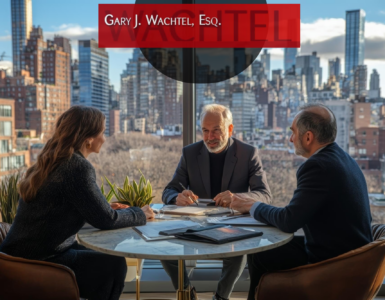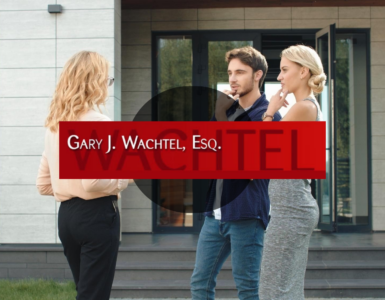The Treasury Department has released a second round of proposed regulations on Qualified Opportunity Zones (QOZs), a program that was created as part of the 2017 Tax Cuts and Jobs Act to encourage long-term investments in low-income communities. The program provides tax incentives to investors who invest in designated QOZs, which are low-income census tracts that have been designated by state governors and certified by the U.S. Department of Treasury.
The QOZ program provides three main tax incentives to investors who invest in QOZs:
Temporary deferral of tax on capital gains until the investment is sold or exchanged, or until December 31, 2026, whichever comes first;
Reduction of the deferred capital gains tax liability by 10% if the investment is held for at least 5 years, and by an additional 5% if the investment is held for at least 7 years; and
Complete elimination of capital gains tax on any appreciation of the QOZ investment if the investment is held for at least 10 years.
The second round of proposed regulations addresses several important issues related to QOZ investments, including the following:
Definition of “Original Use” for Real Property
The proposed regulations clarify that the “original use” of real property in a QOZ must commence with the Qualified Opportunity Zones business, or the QOZ business must substantially improve the property. The proposed regulations also provide a safe harbour for determining whether a property has been substantially improved.
Treatment of Leased Property
The proposed regulations provide additional guidance on the treatment of leased property in Qualified Opportunity Zones. Specifically, the proposed regulations clarify that leased property can be treated as QOZ business property if certain requirements are met, including that the lease is entered into after December 31, 2017, and that the QOZ business is the first to use the property in the QOZ.
Clarification of 50% Gross Income Test
The proposed regulations provide additional guidance on the 50% gross income test, which requires that at least 50% of a QOZ business’s gross income must be derived from the active conduct of a trade or business in the QOZ. The proposed regulations clarify that gross income from certain sources, such as dividends, interest, and capital gains, is not considered to be derived from the active conduct of a trade or business in the QOZ.
Treatment of Working Capital
The proposed regulations provide additional guidance on the treatment of working capital held by a QOZ business. Specifically, the proposed regulations provide that working capital held by a QOZ business is considered to be held for a “reasonable period” if the QOZ business has a written plan that identifies the working capital as being held for the acquisition, construction, or substantial improvement of tangible property in the QOZ.
Treatment of QOFs
The proposed regulations provide additional guidance on the treatment of Qualified Opportunity Funds (QOFs), which are investment vehicles that invest in QOZs. Specifically, the proposed regulations clarify that QOFs must be organized as a corporation or a partnership for tax purposes and that QOFs must hold at least 90% of their assets in QOZ property.
The second round of proposed regulations also includes several additional provisions related to QOZs, including provisions related to the treatment of vacant land, the timing of QOZ designations, and the treatment of partnerships and S corporations. The proposed regulations are intended to provide additional clarity and guidance to taxpayers and practitioners on the QOZ program.
The QOZ program has been widely praised for its potential to attract investment to economically distressed areas. However, some critics have raised concerns about the program, including the potential for abuse and the lack of accountability for investors to ensure that their investments benefit the low-income communities they are intended to serve.
One of the main concerns with the Qualified Opportunity Zones program is that it may primarily benefit wealthy investors, rather than the low-income communities it is intended to serve. Critics argue that the tax incentives provided by the program may encourage investors to focus on maximizing their returns, rather than investing in projects that will have a significant positive impact on the community.
Another concern is that the program may be subject to abuse, particularly in areas where property values are already rising rapidly. Critics argue that investors may be incentivized to invest in areas that are already gentrifying, rather than truly distressed areas that need investment.
There are also concerns about the lack of accountability for investors to ensure that their investments benefit the low-income communities they are intended to serve. While the QOZ program requires that investments be made in designated low-income census tracts, there is no requirement for investors to report on the impact of their investments or demonstrate that they are benefiting the community.
Despite these concerns, the QOZ program continues to attract interest from investors and policymakers. Proponents of the program argue that it has the potential to revitalize economically distressed areas and create new opportunities for residents in those areas.
The second round of proposed regulations on QOZs is intended to provide additional clarity and guidance to investors and practitioners on the program. By addressing some of the key issues related to QOZ investments, such as the definition of “original use” for real property and the treatment of working capital, the proposed regulations may help to make the program more attractive and accessible to investors.
At the same time, it is important to recognize that the QOZ program is just one part of a larger effort to address economic inequality and promote inclusive economic growth. To truly benefit low-income communities and promote sustainable development, investments in QOZs must be accompanied by other measures to support local businesses, improve infrastructure, and provide education and job training opportunities.
Overall, the QOZ program has the potential to be a powerful tool for promoting economic growth and revitalizing low-income communities. However, it is important to approach the program with a critical eye and ensure that investments are made in a way that truly benefits the community and promotes long-term sustainable development. The second round of proposed regulations on QOZs is an important step in that direction, but more work will be needed to ensure that the program lives up to its potential.





